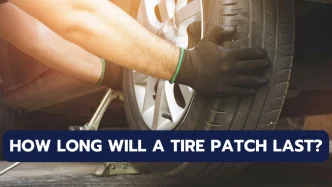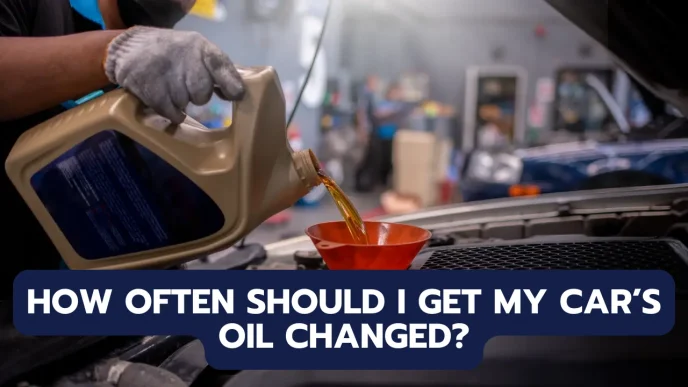When the mercury dips below freezing, drivers across cold regions face the daily challenge of getting their vehicles up and running smoothly. The conventional wisdom for decades was to let the engine idle for several minutes before hitting the road. This was supposed to ensure the car’s engine warmed up properly and that the cabin heater began working faster. But does this practice still make sense with today’s advanced vehicles? The short answer is no, for most drivers. Modern cars are designed to warm up more efficiently and effectively, and excessive idling could actually do more harm than good.
How Long Should You Warm Up Your Car in Cold Weather?
Most experts now agree that 30 seconds of idling is usually sufficient for modern vehicles. After that, it’s best to start driving gently to help the engine and oil reach optimal operating temperatures more quickly. Prolonged idling wastes fuel, increases pollution, and can even cause long-term damage to your engine. This approach might seem counterintuitive, especially for drivers who grew up with the idea that longer warm-up times were necessary. However, advances in fuel-injection technology and motor oil mean that modern vehicles no longer need to idle for extended periods in the cold.
Why the Old “Idling to Warm Up” Advice Is Outdated
The idea that you should let your car idle until it fully warms up has deep roots. In fact, this belief was entirely valid—if you were driving a car built before the 1980s. Older vehicles relied on carburetors, which struggled to vaporize fuel in cold weather. Additionally, motor oil in those days thickened considerably at low temperatures, resembling molasses rather than the smooth lubricant it’s meant to be.
Carburetor Challenges in Cold Weather
Before the 1980s, most cars were equipped with carburetors to manage the air-fuel mixture entering the engine. Carburetors needed time to warm up in cold weather because the metal components struggled to vaporize fuel efficiently at low temperatures. This led to rough idling, stalling, and poor engine performance. Extended idling was necessary to ensure the carburetor could properly mix fuel and air, allowing the engine to run smoothly.
Motor Oil Limitations of the Past
Older motor oils also posed significant challenges. The oils used decades ago were not designed to perform well in freezing temperatures. When temperatures dropped, these oils would thicken dramatically, preventing proper circulation within the engine. Extended idling allowed the oil to heat up and thin out, ensuring that all moving parts received adequate lubrication.
However, modern vehicles have left these limitations behind. Technological advancements have made carburetors obsolete, and modern synthetic motor oils perform well even in frigid conditions.
How Modern Technology Changed Car Warm-Up Practices
Fuel-Injected Engines and Cold Weather
Today, nearly all vehicles use fuel-injection systems rather than carburetors. These systems are controlled by sophisticated onboard computers that can detect the outside temperature and adjust the air-fuel mixture accordingly. When the engine is cold, the computer temporarily enriches the fuel mixture to make starting easier. As the engine warms up, the computer gradually leans out the mixture for optimal performance. This process happens quickly and efficiently, eliminating the need for extended idling.
Improved Motor Oils
Modern motor oils, especially fully synthetic varieties, flow much better in cold temperatures. Unlike the oils of yesteryear, synthetic oils maintain their viscosity and lubricating properties even when temperatures plummet to minus-40 degrees Fahrenheit. This means your engine gets the lubrication it needs almost immediately after starting, reducing the need for a lengthy warm-up.
Why Excessive Idling Can Harm Your Car
Despite the advances in automotive technology, the habit of long idling persists. However, prolonged idling can actually be detrimental to your vehicle. Here’s why:
- Increased Engine Wear: When your engine is cold, the fuel mixture is richer (contains more gasoline). This excess fuel can wash away the lubricating oil from the cylinder walls, increasing wear on the engine over time.
- Catalytic Converter Damage: A rich fuel mixture can damage your catalytic converter, which is essential for reducing harmful emissions.
- Higher Emissions: Idling produces more pollution than driving, contributing to poor air quality.
- Fuel Waste: Idling burns fuel without moving your vehicle, resulting in zero miles per gallon.
- Potential Legal Issues: In many jurisdictions, prolonged idling is illegal and could result in fines.
When Is Idling Necessary in Cold Weather?
While excessive idling is generally discouraged, there are situations where a longer warm-up period makes sense. For instance:
- Extremely Low Temperatures: If you live in areas where temperatures regularly dip well below zero, a few extra minutes of idling may be necessary to ensure your engine and cabin are adequately warm.
- Safety Considerations: If your car is covered in snow and ice, you’ll need time to clear your windshield and windows for safe driving. Letting the engine idle while you de-ice your car helps make this process more comfortable and effective.
- Heater Performance: In extremely cold conditions, giving your engine a little extra time to warm up ensures that your heater works effectively, preventing your windows from fogging up while driving.
Best Practices for Warming Up Your Car in Winter
- Start the Engine and Let It Idle for 30 Seconds: This brief period allows the oil to circulate through the engine.
- Drive Gently: After 30 seconds, begin driving, but avoid high speeds or heavy acceleration until the engine reaches its normal operating temperature.
- Clear Snow and Ice: Use the idle time to clear your vehicle of any snow and ice for safe visibility.
- Use High-Quality Motor Oil: Consider using synthetic oil, which performs better in cold weather.
- Keep Your Car Maintained: Ensure your battery, antifreeze, and other systems are in good condition for winter driving.
Why Driving Warms Up Your Car Faster Than Idling
When you drive, the engine works harder than when it idles. This increased activity generates more heat, allowing your engine and motor oil to reach optimal temperatures more quickly. Additionally, driving helps the transmission, brakes, and other components warm up faster, ensuring your entire vehicle operates smoothly.
How long should you idle your car in freezing weather?
In most modern vehicles, 30 seconds of idling is sufficient, even in freezing temperatures. After that, driving gently helps the engine and motor oil warm up more efficiently. Extended idling is generally unnecessary and can lead to fuel waste and engine wear.
Is it bad to let your car idle for a long time in winter?
Yes, prolonged idling can cause several issues, such as increased engine wear, damage to the catalytic converter, and higher fuel consumption. It also contributes to air pollution and may be illegal in certain areas. Modern engines are designed to warm up faster while driving.
Why do older cars need to idle longer in the cold?
Older cars, particularly those with carburetors, needed extended idling because carburetors struggled to vaporize fuel in cold weather. Additionally, older motor oils thickened in low temperatures, requiring more time to heat up and lubricate the engine properly.
What happens if you drive off immediately without warming up?
In modern vehicles, driving off immediately (after about 30 seconds) is perfectly fine and recommended. The engine warms up faster while driving, and modern fuel-injection systems ensure the engine receives the correct fuel mixture for cold starts.
Does idling in cold weather damage the engine?
Extended idling can damage your engine by allowing excess fuel to wash away lubricating oil from the cylinder walls. This can increase engine wear over time. Additionally, idling for long periods wastes fuel and harms the environment.
How does modern motor oil perform in cold weather?
Modern synthetic motor oils are designed to flow easily at low temperatures, even down to minus-40 degrees Fahrenheit. These oils maintain their viscosity, providing immediate lubrication to the engine, reducing the need for lengthy warm-ups.
Are there legal restrictions on idling your car?
Yes, many places have laws against prolonged idling to reduce pollution and fuel waste. Penalties for violating these laws can range from fines to warnings, depending on the location and severity of the offense.
Can idling your car warm up the interior faster?
In extremely cold weather, idling for a few minutes can help warm up the interior slightly, making it easier to clear ice and snow. However, driving is generally the quickest way to warm both the engine and the cabin.
What is the safest way to warm up your car in winter?
Start the engine, let it idle for about 30 seconds, and then drive gently. Use the idle time to clear snow and ice from your car. Ensure your car is properly maintained for winter conditions, including using the right motor oil and keeping your battery charged.













